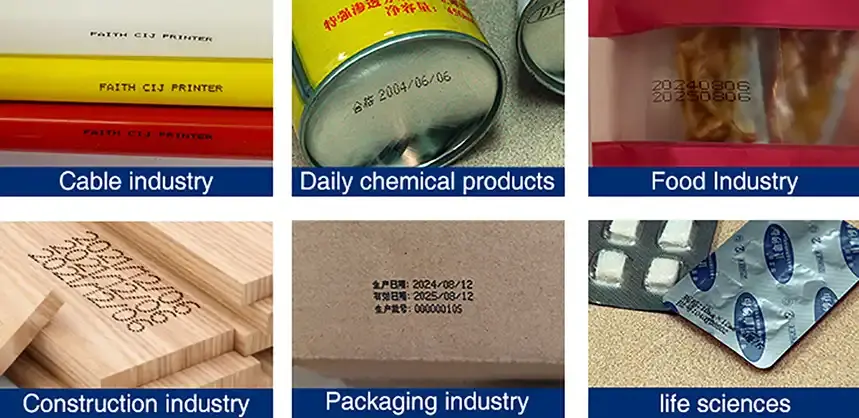How do inkjet printers create characters and graphics?
Inkjet printing technology has revolutionized the way we create characters and graphics in various industries. From food and beverage packaging to pharmaceutical labeling, small character inkjet printers have become indispensable tools for manufacturers. Whether you're a production manager looking to optimize your manufacturing line or a quality control specialist seeking to ensure regulatory compliance, understanding the intricacies of inkjet printing can help you make informed decisions about your coding and marking needs. In this comprehensive guide, we'll delve into the fascinating world of inkjet printing, exploring how these remarkable machines bring words and images to life on a variety of surfaces.
The Science Behind Inkjet Printing: Droplets and Precision
Inkjet printing technology is based on a process that’s conceptually simple yet technically complex. Small character inkjet printers work by ejecting tiny droplets of ink onto a substrate, forming patterns that represent characters and graphics. This technique, called drop-on-demand printing, ensures high-speed, precise application of ink on various materials. It allows for quick and accurate marking across a wide range of surfaces, making it highly versatile and efficient for applications requiring both detail and speed.
The key to the efficiency of small character inkjet printers is that they can control these tiny ink droplets with amazing precision. Its printing principle can be summarized in one sentence: controlling the movement of charged particles in an electric field. The ink forms a stable ink flow under the action of the built-in pump, and the ink flow enters the crystal oscillator (spray chamber) through the control solenoid valve. In the crystal oscillator, the electronic pulse generates vibrations to break the ink flow into independent ink droplets. If the crystal oscillator can vibrate 70,000 times per second, it can form 70,000 ink droplets per second.
This level of control allows small character inkjet printers to create highly detailed characters and graphics, even at high production speeds. For industries like electronic components manufacturing, where precise, small-scale printing is crucial, this technology is a game-changer. The ability to print clear, durable serial numbers and product models on tiny components demonstrates the remarkable capabilities of these printers.
Adaptability and Versatility: Printing on Various Surfaces
One of the most impressive aspects of small character inkjet printers is their ability to print on a diverse range of materials. From porous surfaces like cardboard to non-porous materials like glass or metal, these printers can adapt to meet the needs of various industries. In the food and beverage industry, for instance, small character inkjet printers must be able to print clearly on plastic bottles, metal cans, and even directly on some food products. The pharmaceutical industry, with its strict regulatory requirements, relies on these printers to produce high-quality, precise codes on various drug packaging materials.
This versatility is achieved through a combination of specialized inks and advanced printing algorithms. Solvent-based inks are often used for non-porous surfaces, while water-based inks work well on porous materials. UV-curable inks offer excellent adhesion and durability across a wide range of substrates, making them ideal for industries like automotive parts manufacturing where printed information must withstand harsh conditions.
The adaptability of small character inkjet printers extends beyond just material compatibility. These machines can often be integrated seamlessly into existing production lines, allowing for continuous, high-speed printing without disrupting the manufacturing process. This is particularly valuable in industries like wire and cable production, where continuous printing over long distances is required.

From Digital to Physical: The Journey of a Character
The process of creating characters and graphics with small character inkjet printers begins in the digital realm. Modern printers use sophisticated software to translate digital designs into physical prints. This software breaks down the desired characters or graphics into a matrix of dots, which the printer then recreates using its array of ink nozzles.
The journey from digital to physical involves several steps:
1. Design Creation: The desired text or graphic is created using specialized software.
2. Rasterization: The design is converted into a bitmap image, essentially a map of dots that will guide the printer.
3. Data Transfer: This bitmap data is sent to the printer's control system.
4. Printing: The control system activates the printheads, ejecting ink droplets in the pattern specified by the bitmap.
5. Drying or Curing: Depending on the ink type, the print may dry naturally or require UV curing.
This process happens at incredible speeds, allowing small character inkjet printers to keep pace with even the fastest production lines. In the cosmetics and personal care products industry, where aesthetic appeal is crucial, this high-speed, high-precision printing allows for clear, beautiful labels on small, diverse packaging.
The ability of small character inkjet printers to create complex characters and graphics is not just about speed and precision, however. These printers also offer remarkable flexibility in terms of what can be printed. From simple text to complex barcodes and QR codes, small character inkjet printers can produce a wide range of information types to meet various industry needs.
Conclusion
In conclusion, the process by which inkjet printers create characters and graphics is a marvel of modern technology. Through precise control of ink droplets, adaptability to various surfaces, and seamless translation of digital designs into physical prints, small character inkjet printers have become indispensable tools across numerous industries. Whether you're in food and beverage, pharmaceuticals, electronics, or any other sector requiring high-quality, high-speed printing, understanding this technology can help you optimize your production processes and meet your coding and marking needs.
If you're looking to enhance your production line with state-of-the-art industrial UV inkjet coding and traceability system solutions, don't hesitate to reach out to us at Shenyang Faith Technology Co., Ltd. Our team of experts is ready to help you find the perfect solution for your specific needs. Contact us at sale01@sy-faith.com to learn more about how our innovative small character inkjet printers can revolutionize your manufacturing process.
References
1. Hutchings, I. M., & Martin, G. D. (Eds.). (2012). Inkjet technology for digital fabrication. John Wiley & Sons.
2. Magdassi, S. (Ed.). (2009). The chemistry of inkjet inks. World scientific.
3. Hoath, S. D. (Ed.). (2016). Fundamentals of inkjet printing: the science of inkjet and droplets. John Wiley & Sons.
4. Zapka, W. (Ed.). (2017). Handbook of industrial inkjet printing: a full system approach. John Wiley & Sons.
5. Wijshoff, H. (2010). The dynamics of the piezo inkjet printhead operation. Physics reports, 491(4-5), 77-177.
Online Message
Learn about our latest products and discounts through SMS or email
_1756448672045.jpg)
_1756447852321.jpg)

